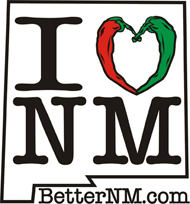Mikaela says:
Actually, this was written thinking about Barelas, while at the NHCC writing with teens this summer. But the news that Bernalillo has passed the plan guiding development around the two new railrunner stations has me thinking about commuter rail & change... and how we want to do it better than we did during the 1970s urban renewal, which centered around highways instead of rail...
Barelas History
I. Renewal
They couldn’t see it coming –
the prosperity stopping just short of downtown.
Despite the bulldozers
the new bricks
it came as a surprise
when the toilets flushed
and the roofs stopped leaking
for a year or two.
They thought finally the City cared –
the paved streets would welcome them to office jobs
where their feet would tread silently on blue carpet
and their fingers and arms and incomes
would finally
be safe.
The payoff for future neglect
was so massive
it overshadowed their understanding –
how any white man could pay so much
to care less
tomorrow.
So they welcomed renewal
and waited for the parade that never came
and never came
until the sidewalks cracked
and the traffic cut through neighborhood streets
like a flash flood rips weeds from acequias
yanking out one by one
the spikes connecting this community to the railyard
replacing la mercado familia with fast food, fast gas, fast cars
a faster flash of opportunity for escape
before the bricks faded
the roofs began to sag
the children moved one by one
to the Heights or to Springer
and culture solidified in mosaic tile
to mark the livelihood of what had once been there.
The houses hold their breath for equity loan pauses –
the patches lined up to come first.
The walls to come down
or picture windows to gaze out
crouch in wait
for a tax rebate
an inheritance check
a rich husband.
Those coming and those staying
hold the streets steady –
the gangs and the grandmas
matched in presence and will.
Downtown pushes insistent
at the borders
and money trickles slowly
down
still paved in creosote
that soaks to the river.
II. Revitalization
New and Hispanic, the cultural center
holds one edge
cementing in memory
what it wiped from space
so as not to erase
a people.
On Mondays the irony
is sometimes too much to bear.
The empty broken windows of rail houses
watch commuter trains
dump white-collar workers earning enough
to work far from home
at skeleton stations in Belen, Los Lunas,
Downtown, Bernalillo.
The jobs pass Barelas
doing 35.
The trains run so quiet
no one wakes anymore
to hear them go by at 8
at 10, noon
or return their wrist-sore riders home at 4,
6, 8.
Only new Barelas gente armed with lattes
brewed in 2-story town homes
with backs to the neighborhood
leaning into downtown
run to greet the trains
laptops in hand
wired
for Railrunner’s wireless.
The future runs silent
for these families old and new
who grasp their houses
as the last treasure they can afford.
The capital builds to the east
to the west –
the railroad zipping the growing city closed
pulling close a history
that will once again
become the past.





|